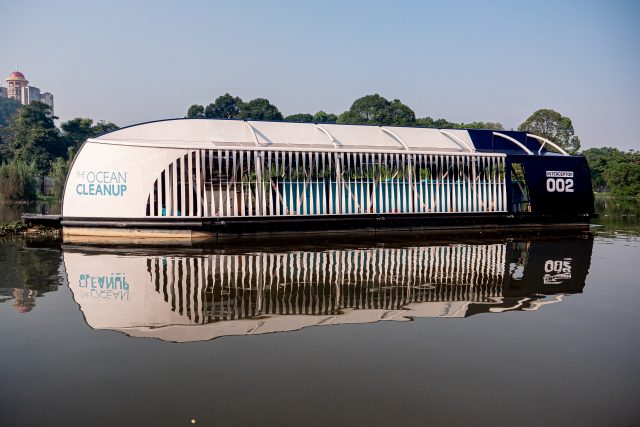- About
- Topics
- Picks
- Audio
- Story
- In-Depth
- Opinion
- News
- Donate
- Signup for our newsletterOur Editors' Best Picks.Send
Read, Debate: Engage.
| June 08, 2024 | |
|---|---|
| topic: | Ocean Pollution |
| tags: | #Coastal Cleanup, #plastic pollution, #ocean pollution, #marine life |
| located: | USA, China, India, United Kingdom, South Africa, Brazil, Australia |
| by: | Sara Jabril |
A global ocean clean-up is scheduled to take place between 15-16 June through a collaborative effort of NGOs worldwide.
As the event draws near, we take a moment to highlight past clean-ups, which have cumulatively involved millions of volunteers and covered tens of thousands of miles.
Such efforts not only highlight the urgent need to protect our coasts from escalating pollution but also reveal the significant impact our daily lives and the products we use have on the environment.
The Ocean Conservancy compiled a list of the top 10 items found during clean-ups, with five of them being plastic products.
The number one item found during the clean-up was cigarettes and cigarette filters. During the International Coastal Ocean Cleanup in 2022, over 1,860,615 cigarette butts were collected.
These items often travel through drains and gutters, eventually ending up in the ocean, where animals and birds can mistake them for food and ingest the harmful toxins present in cigarettes.
The next most prevalent ocean pollutant is beverage plastic bottles.
Over 1 million plastic bottles are sold every minute around the world, according to a 2023 report published by the United Nations University Institute for Water, Environment and Health. By 2023, global sales of plastic water bottles are predicted to grow by nearly 50 per cent, inevitably resulting in a colossal amount of plastic waste that ends up in the ocean.
Research by the Ellen MacArthur Foundation predicts that by 2050, the amount of plastic in the ocean will outweigh the amount of fish. During the 2022 International Coastal Ocean cleanup, 1,175,045 plastic beverage bottles were collected.
During the 2022 ocean clean-up, 998,661 food wrappers and containers were collected, highlighting the severe plastic problem in our oceans.
Most of these wrappers are non-biodegradable and accumulate on sea floors, posing a significant risk to marine animals that may ingest and choke on them.
Bottle caps are small enough to be swallowed whole by birds or sea animals, posing significant risks. This type of pollution can obstruct airways or become lodged in digestive systems, causing severe discomfort and pain to the affected animals.
844,375 plastic caps and lids were found in the 2022 ocean clean-up, with many more remaining in the sea.
Over a million plastic bags were retrieved in the ocean pollution clean-up in 2022. Despite the increasing number of bans on plastic bags worldwide, their proliferation persists.
Sea animals are often found tangled in plastic bags, with some even being choked to death by them.
Cutlery and cups in the ocean number in the hundreds of thousands (692,767 were retrieved in a single ocean clean up). These sharp, non-biodegradable objects can remain in the seas for hundreds of years, posing injury risks to sea animals.
Globally, initiatives are emerging to produce biodegradable cutlery solutions that reduce environmental harm and help protect the oceans. One interesting example is an edible cutlery solution from India.
Plastic straws are on the way out, thankfully. But the damage they've already done to the ocean remains evident, with 406,557 straws and stirrers found littering the waters in the 2022 clean-up.
Even if plastic straws have no place in our future, hundreds of thousands still remain in our oceans from our collective past.
Towards the bottom of our list, we see glass beverage bottles, with 521,730 picked up in a single ocean clean-up back in 2018. While glass may sink, it never disappears.
According to a 2022 study published in ScienceDirect, glass pollution can harm marine life by disrupting organisms and entering the food chain.
Many sea species, the study finds, can suffer due to the buildup of glass nano/micro particles, which can also make their way into the human food chain through seafood.
A total of 339,875 metal beverage cans were found lining the ocean floors during the 2018 clean-up, contributing to further pollution. These cans have serrated edges that can injure animals, similar to the dangers posed by cutlery and glass.
Last on our list of ocean waste are paper bags. People often overlook the fact that paper bags can have a higher carbon footprint than plastic bags, as their production requires roughly four times more energy compared to plastic bags. According to a Washington Post analysis, paper bag production is responsible for 50 times more water pollution compared to plastic due to the high usage of toxic chemicals in the process.
It's therefore not just plastic bags we need to be cautious about, but paper bags too.
Image by Cristian Palmer.
By copying the embed code below, you agree to adhere to our republishing guidelines.

